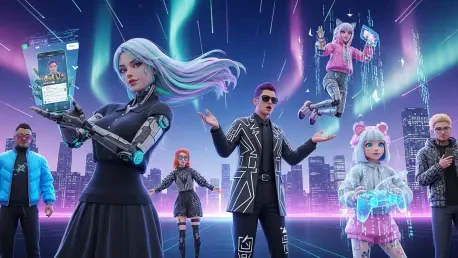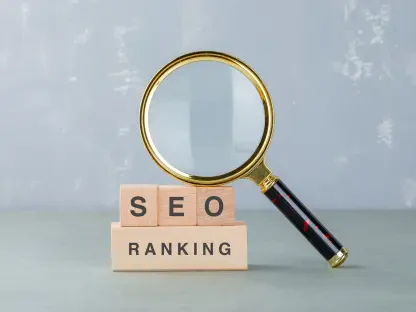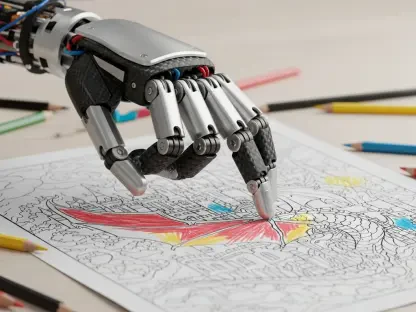I’m thrilled to sit down with Anastasia Braitsik, a global leader in SEO, content marketing, and data analytics, to dive into the fascinating world of AI influencers on social media. With her deep expertise in digital trends, Anastasia offers unparalleled insights into how virtual personas are reshaping brand strategies and audience engagement. In this conversation, we explore the explosive growth of the AI influencer market, the reasons brands are flocking to these digital avatars, their impact on audience interaction, ethical dilemmas, and the future of this innovative space.
How has the AI influencer market evolved in recent years, and what do the numbers tell us about its potential?
The AI influencer market has seen staggering growth, and the numbers are pretty jaw-dropping. As of 2025, it’s already valued at over $8.3 billion, with projections to skyrocket to $154.6 billion by 2032. That’s a compound annual growth rate of over 40%, which shows just how fast this space is expanding. What’s driving this is a mix of technological advancements and consumer behavior—over 60% of people are already interacting with virtual influencers, and brands are noticing. By 2026, we’re expecting CMOs to allocate 30% of their influencer budgets to these digital personas. It’s a clear signal that AI influencers aren’t just a trend; they’re becoming a core part of marketing strategies.
What makes AI influencers so appealing to brands compared to their human counterparts?
Brands are drawn to AI influencers for a few key reasons. First, they’re available 24/7—there’s no downtime, no scheduling conflicts, just constant engagement. They also offer unmatched creative control; brands can shape every aspect of a virtual persona’s image, messaging, and personality to align perfectly with their vision, without the risk of off-brand moments or scandals. On top of that, they’re cost-effective. You don’t have to deal with contracts or agents, and scaling a campaign across multiple regions or platforms with different avatars is much easier and cheaper than managing human talent. It’s a game-changer for efficiency.
Can you elaborate on how AI influencers seem to captivate audiences more effectively than human influencers?
Absolutely. Data shows that engagement rates for AI influencers can be up to three times higher than for human influencers, which is remarkable. A big part of this is the novelty factor—people are intrigued by hyper-realistic avatars that blend the surreal with the familiar. Their polished, often idealized aesthetics grab attention and spark curiosity, leading to more likes, shares, and comments. It’s not just about looks, though; these personas are often designed to feel relatable yet aspirational, hitting an emotional sweet spot with audiences that drives interaction and brand recall.
In what ways are social media platforms facilitating the rise of AI influencers, and how are different demographics responding?
Social media platforms are actively integrating AI influencers into their ecosystems, making it seamless for brands to use them. For instance, TikTok allows companies to deploy AI-generated avatars for things like product placements or outfit modeling with minimal creative input. Instagram, YouTube, and Snapchat are also teeming with virtual influencers across niches like fashion and gaming. As for demographics, Gen Z and Millennials, especially in North America, are incredibly receptive. They’re drawn to the innovation and engagement these personas offer, often valuing the blend of digital creativity over traditional human content. It’s a generational shift in how content is consumed.
What ethical challenges stand out to you when it comes to the growing presence of AI influencers?
One of the biggest ethical hurdles is transparency. As AI influencers become more lifelike, many users don’t even realize they’re engaging with a virtual entity. Industry data shows that nearly 44% of marketers are worried about this lack of clarity, and for good reason—if audiences feel deceived, it can erode trust in a brand overnight. Beyond that, there’s the issue of mental health. The hyper-idealized images these avatars often project can set unrealistic beauty standards, especially for younger users, potentially impacting self-esteem. It’s a complex challenge that needs careful navigation.
There’s been some concern about manipulation with AI influencers. Can you unpack how their ability to customize content plays into this?
AI influencers have an incredible capacity to tailor content down to the smallest detail using machine learning and audience profiling. They can adjust their tone, appearance, and messaging to resonate with very specific groups, which boosts engagement but also raises red flags. Critics worry this level of personalization can border on manipulation, encouraging overconsumption or even emotional exploitation, particularly among vulnerable audiences. It’s a powerful tool, but without ethical guardrails, it risks crossing into territory where influence feels less authentic and more engineered.
What is your forecast for the future of AI influencers in the digital marketing landscape?
I see AI influencers becoming a staple in digital marketing, especially in industries like fashion, tech, and entertainment. With advancements in generative AI and motion capture, they’ll only get more lifelike and integrated into both digital and physical experiences. We’ll likely see them dominate experiential marketing, blending virtual and real-world interactions in ways we can’t yet fully imagine. However, their long-term success hinges on balancing innovation with accountability. Brands that prioritize transparency, diversity, and ethical messaging will build trust and credibility, ensuring AI enhances authenticity rather than replaces it. It’s an exciting, yet challenging, frontier.









